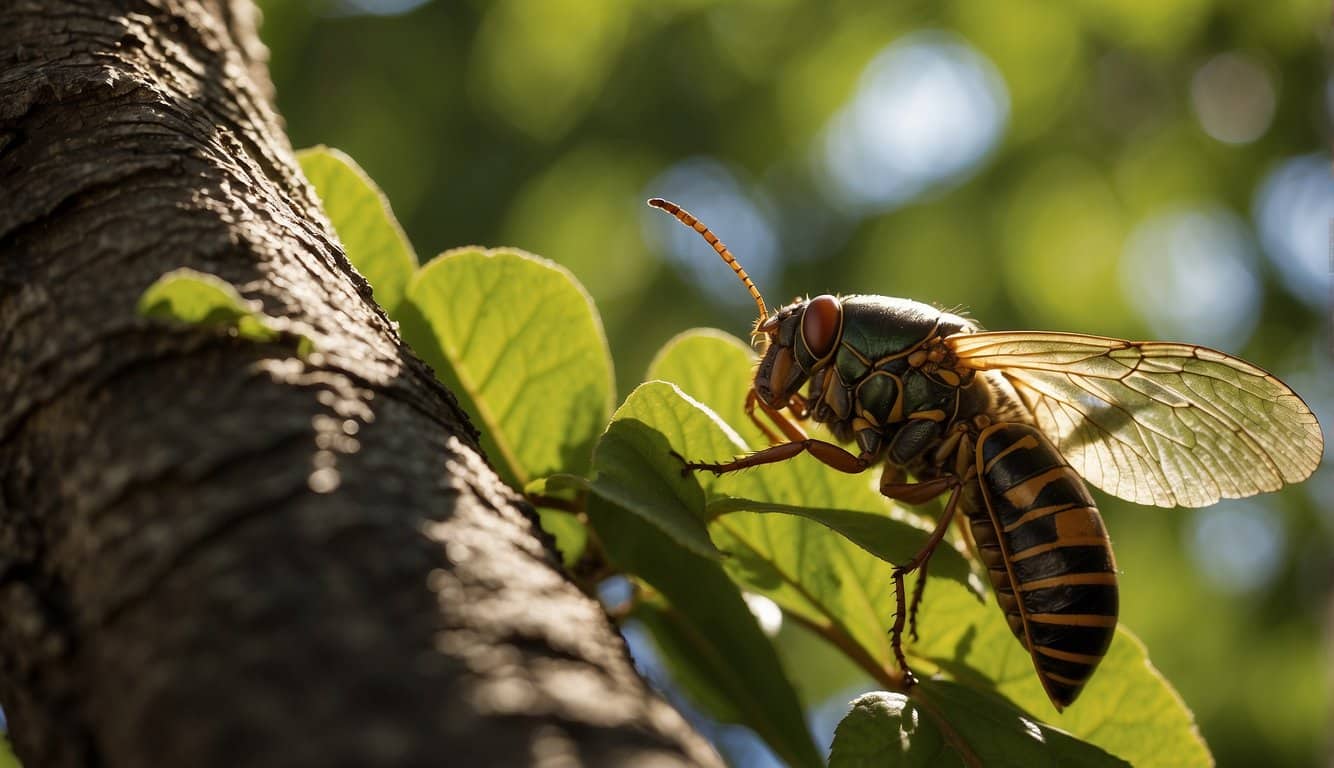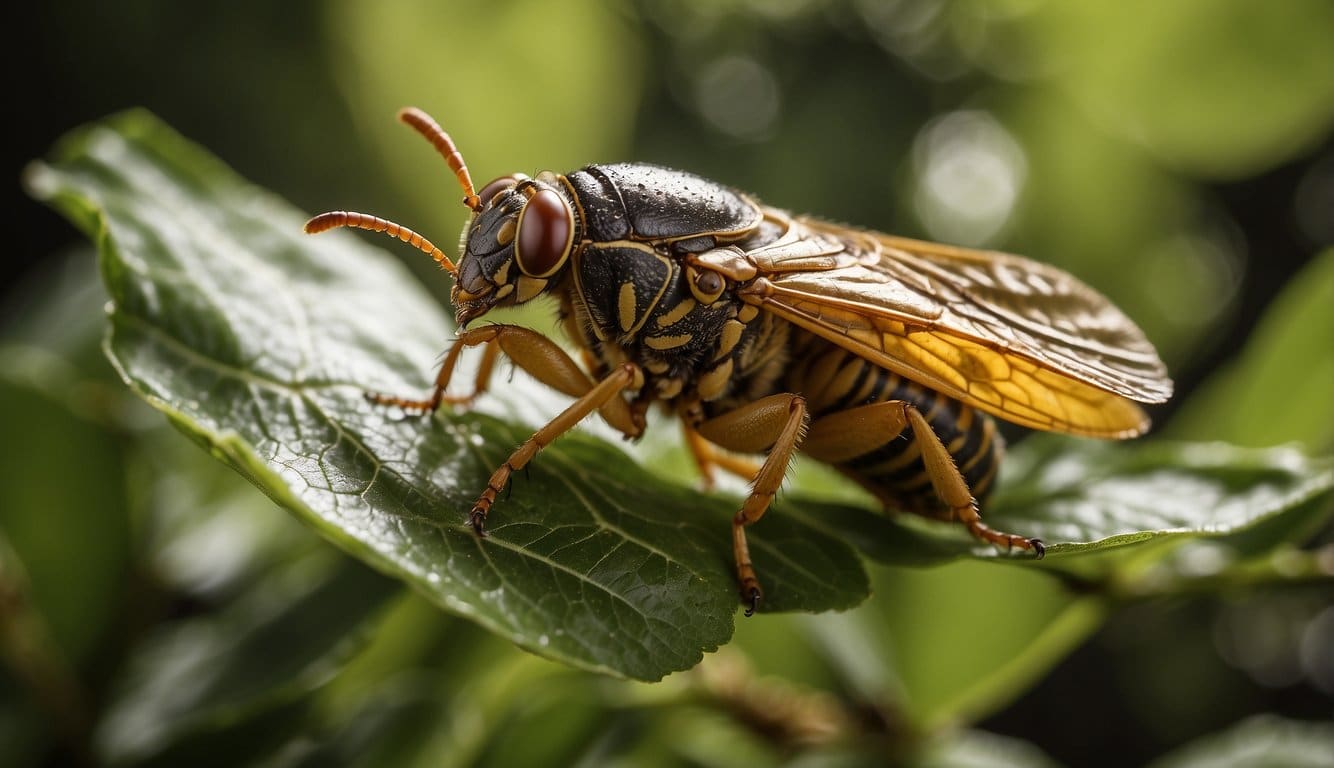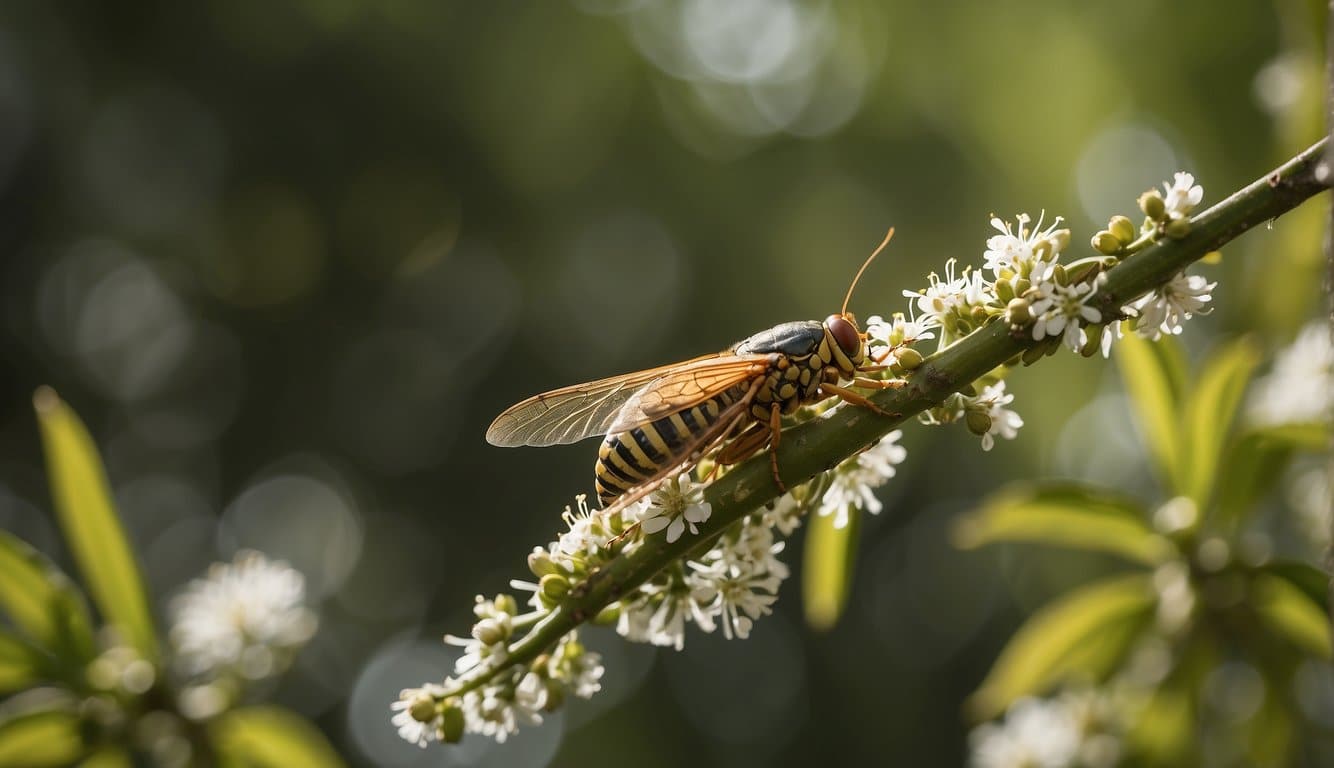Cicada Basics
Before you plan your next outdoor adventure, let’s tick through the essential facts about cicadas, ensuring your encounters are informed and less likely to be misunderstood.
Species Identification
- Annual vs. Periodical: Cicadas are typically split into two main groups: annual cicadas, which appear every year, and periodical cicadas, known for their synchronized, mass emergences after 13 or 17 years underground.
- Distinct Markings: You can often tell cicada species apart by their size, color, and wing patterns.
- For instance, periodical cicadas usually have black bodies, red eyes, and clear wings with orange veins.
Lifecycle and Emergence
- Development Stages: Cicadas undergo a fascinating transformation process called incomplete metamorphosis. This encompasses three stages: egg, nymph, and adult.
- Emergence Timing: They’re famous for their emergence, in which nymphs exit the soil, shed their exoskeletons, and revel in the sun to harden their new adult bodies.
- Typically, this happens like clockwork, with periodical broods emerging in region-specific cycles.
Cicada Interaction With Humans
As you step outside during cicada season, you’re likely to encounter these buzzing insects. Don’t worry, though; understanding their behavior can make your interactions with them more comfortable.
Bite or No Bite
Cicadas are more of nature’s background music than a threat to your outdoor plans. Here’s the scoop on cicada bites:
- Capability: Cicadas possess a proboscis, an appendage that resembles a drinking straw, but it’s designed for sipping tree sap, not piercing skin.
- Incidents: On very rare occasions, cicadas might mistake your warmth for a tree’s surface, resulting in a harmless mistaken bite.
Safety Precautions
Not fond of the idea of cicadas landing on you? No problem. Take these straightforward steps to steer clear of the harmless blunders of these insects:
- Clothing: Wear light-colored clothing; cicadas are less attracted to these hues.
- Movement: Move slowly and deliberately. Quick motions can startle them, possibly leading to them confusing you with a landing spot.
Cicadas and Ecosystem Impact
As you explore the outdoors, it’s clear cicadas are more than just noisy insects; their emergence has profound effects on the ecosystems you love.
Role in the Environment
- Decomposers: After cicadas die, their bodies become a source of nutrients.
- Prey: These insects serve as a plentiful food source for a variety of animals.
Cicadas provide a substantial boost to the local food web during their brief above-ground lifespan.
For instance, the emergence of Brood XIX and XIII significantly alters predator-prey dynamics, offering a feast for birds, mammals, and even fish.
With billions of cicadas emerging at once, they essentially set the table for wildlife, giving many species a nutritional bonanza.
Effect on Plant Life
- Oviposition: Cicadas lay eggs in twigs, which can cause damage known as “flagging.”
- Root feeding: Nymphs feed on plant roots underground, affecting the growth.
The sheer number of cicadas can lead to visible impacts on trees and plants.
While flagging might seem harmful, it actually serves as a natural pruning process for some plants, stimulating new growth.
The impact on trees and the broader plant community can be surprisingly complex, influencing long-term forest dynamics.
Frequently Asked Questions
In this section, you’ll find straightforward answers to some pressing questions about cicadas and those rare occasions when they may mistake you for a plant.
What’s the real deal—do cicada bites actually hurt?
Cicadas aren’t known to aggressively bite humans, and if a cicada does mistake you for a piece of vegetation, the sensation is more surprising than painful. It’s a misconception that cicadas have a bite like biting insects.
Hey, what should I expect if a cicada gets a little too close and bites me?
If by chance a cicada attempts to probe you with its mouthparts, expect a light prick. These creatures aren’t venomous nor are they looking for a blood meal, so the interaction would likely be brief and harmless.
Curious minds want to know: can our furry friends get bitten by cicadas?
While curious pets may find cicadas intriguing, it’s very unlikely for these insects to bite your pets. Cicadas don’t seek out animals or humans to bite; they occasionally mistake them for plants when attempting to feed.
Look out, do these winged critters pack a punch strong enough to break human skin?
No need to worry about armor-piercing bites here. Cicada mouthparts are not designed to break human skin. Their feeding mechanism, designed for plant sap, is not strong enough to penetrate your skin.
I’m holding a cicada, should I be worried about any health risks?
Cicadas are not carriers of diseases pathogenic to humans, and usually, they pose no health risks. Just wash your hands after handling them, as you would with any wild creature.
Is there a reason to panic if a cicada lands on me?
Absolutely not. If a cicada lands on you, feel free to enjoy the moment or gently place the creature back on a plant.
They are fascinating, harmless insects that pose no threat to humans.


